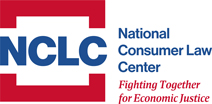FOR IMMEDIATE RELEASE: May 20, 2020
National Consumer Law Center contacts: Jan Kruse (jkruse@nclc.org) or Lauren Saunders (lsaunders@nclc.org)
New bank regulator guidance could permit balloon-payment loans but emphasizes responsible lending
WASHINGTON, D.C. – As our nation grapples with the economic fallout of the COVID-19 pandemic, the Federal Deposit Insurance Corp. (FDIC) announced plans today to repeal two guidances that protect consumers against high-cost bank payday loans over 36%, and four federal bank regulators issued small-dollar loan guidance that could open a crack to permit balloon-payment bank payday loans. By failing to warn against triple-digit interest rates and suggesting that banks may offer single-payment loans, new guidance from the FDIC, Office of the Comptroller of the Currency (OCC), Federal Reserve Board (FRB) and National Credit Union Administration (NCUA) might encourage some banks to make unaffordable loans that trap borrowers in a cycle of debt, advocates warned, though other parts of the guidance emphasize that loans must be affordable and not lead to repeat reborrowing.
“The evidence is clear that bank payday loans, like traditional payday loans, put consumers in a debt trap,” said Lauren Saunders, deputy director of the National Consumer Law Center. “The American public strongly supports limiting interest rates to 36%, so it’s shocking that in the middle of an economic crisis the FDIC would repeal its 36% rate guidance and its letter warning of the dangers of bank payday loans. Congress should pass a 36% rate cap for banks and other lenders, and banks should decline to take the bait and not risk their reputations by making high-cost loans.”
Around the time of the last recession, a handful of banks were making balloon-payment bank payday loans – so-called “deposit advance products”– that put borrowers in an average of 19 loans a year at over 200% annual interest. Most banks stopped making bank payday loans in 2013 after the OCC and FDIC issued guidance warning about the problems the loans cause. But the OCC repealed its guidance in 2017 and the FDIC announced today that it would repeal its deposit advance product guidance, along with its 2007 small dollar loan guidance that encouraged banks to limit interest rates on small dollar loans to 36%.
The new joint guidance encourages banks and credit unions to make “responsible” small dollar loans with appropriate underwriting and terms that support successful repayment rather than reborrowing, rollovers, or immediate collectability in the event of default. But the guidance offers few specifics, explicitly permits “shorter-term single payment structures,” and is vague on appropriate interest rates, though it does say that pricing should be reasonably related to the institution’s risks and costs.
“Banks should not read this guidance as an opening to return to bank payday loans, which cannot be made responsibly and lead to a cycle of debt. Any hint that bank payday loans or loans over 36% may be appropriate is especially dangerous coupled with the CFPB’s expected gutting of the payday loan rule and the FDIC and OCC’s separate proposal that will encourage “rent-a-bank” schemes where banks help non-bank lenders make triple-digit interest loans that are illegal under state law,” Saunders explained.
“The continued assault by this Administration on protections against high-cost loans makes clear why Congress must step up and cap rates at no more than 36%. Bank small dollar loans must be fair and affordable – at annual rates no higher than 36% for small loans and lower for larger loans,” said Saunders. “We will monitor whether banks offer loans that help or loans that hurt families, especially low-income households and communities of color.”
